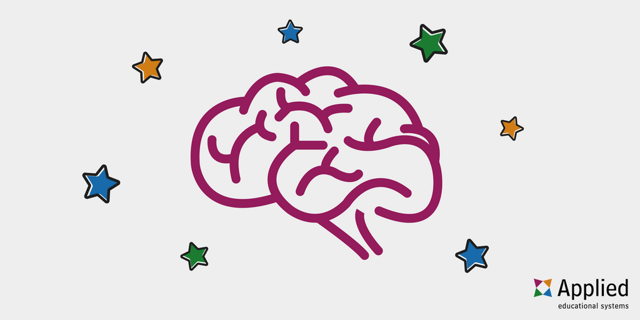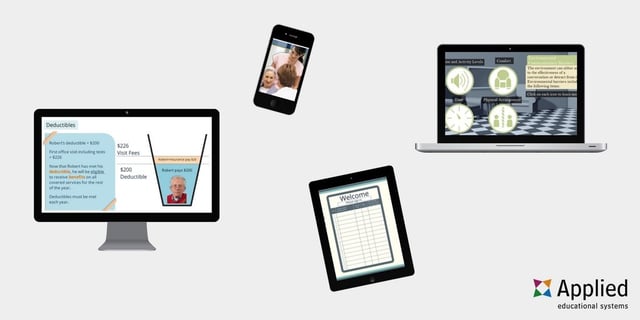Career and Technical Education (CTE) | Flipped Classroom | Teaching Strategies
How To Experience the Benefits of a Flipped Classroom in CTE
As a CTE curriculum provider, teachers often ask us for ideas on how best to use eLearning curriculum in their classroom. While we know every classroom and set of students is unique, one option we suggest is a flipped classroom approach. When we share this, some teachers ask questions like “What is a flipped classroom?” and “What are the benefits of a flipped classroom?”
Trying a new teaching approach can be difficult, but there are many CTE teachers out there succeeding with the flipped classroom. One teacher is Kozy Hubbard, a health science instructor in the Medical Academy of Bartow High School in Polk County, Florida that I had the opportunity of interviewing about the flipped classroom approach.
Early in her teaching career, Kozy had heard about the flipped classroom, but wasn’t sure how it worked or if it would apply to her program. That is until she attended an EMS Conference and heard from Daniel Limmer, an author and EMT/EMR instructor in Maryland.
“I never understood the concept of the flipped classroom until I talked to him. He said, ‘You make them do the work. You get them doing this at home and when they come in to you, they’re prepared.’ It’s such a great concept! I do that with a lot of my students and it has really worked out.”
After using this approach for some time, Kozy and her students have had a great experience. They have seen a number of the benefits of a flipped classroom that other health science teachers would love to experience. The benefits Kozy has seen while using HealthCenter21 in a flipped classroom approach are:
- Increased student engagement and deeper learning
- More interest generated in health care subjects
- Better flexibility with varying technology access
- Meeting the needs of diverse learners more easily
In this article, I will review these 4 benefits of a flipped classroom, but first… What is a flipped classroom?
At it’s core, “flipping the classroom” is a type of blended learning in which students do typical classroom work at home. This leaves class time for discussions, projects, and hands-on skill development. By flipping your classroom, you can have more time to work directly with your students and give more personalized instruction.
Keeping Students Engaged with a Flipped Learning Approach

Many health science teachers struggle to keep their students engaged. Because these teachers usually do not have a background in education, they don’t have a base with ideas on keeping students engaged. A health care career has provided health science teachers with a lot of knowledge and subject matter expertise, but classroom management isn’t going to be second nature.
Kozy found that by using HealthCenter21 with a flipped learning approach her student engagement has increased. Part of the reason that Kozy believes student engagement and interest has increased is that she doesn’t spend as much time lecturing. This allows classroom time to be much more focused and the students experience deeper learning.
“I find with HealthCenter21 that the students are more engaged when I am doing the lecture because I try to have them go through the modules prior to me lecturing and even sometimes while I am lecturing. I say ‘You have to do this at home and then you’ll come in here and I’m going to lecture.’
It has cut down on my lecture time, which I thoroughly enjoy because I can go through it quicker. What it does is it kind of stimulates the students because now they're saying, ‘Oh, I have a question. I didn't understand this. I heard that on HealthCenter21, but can you explain it to me?’ So when I'm doing lecture, we get a little bit more into the meat and potatoes of everything.”
Giving Pre-Work Increases Interest in Specific Health Care Topics
Another benefit Kozy has seen with students completing lessons outside of the classroom is how it generates more student interest in the topics that will be discussed. She really sees this impact in her EMR courses:
“I make all of my EMR students do all of their HealthCenter21 prior to me getting them. They’re more interested in everything. They already have in their head what questions they want to ask.
If they didn’t understand something, or if they were like, ‘Wow, that was really neat. I didn’t know about that… can you explain it more to me? I remember it from HealthCenter21, but can you explain it more?’
It just gets them thinking more once they are in the classroom.”
Ease of Access Amplifies the Benefits of a Flipped Classroom

Sometimes in a health science program, teachers think that because they don’t have daily access to computers in their classroom they can’t use an instructional tool like HealthCenter21. In Kozy’s case, she doesn’t have access to any computers during the school day, but by using the flipped classroom approach she makes it work seamlessly.
“I don’t have computers right now. We have one computer cart and if we have time I tell the students they can go over to Miss Hill’s and grab a computer if she’s not using them. Otherwise, get out your phone or do it at home. They always have alternate ways to do the work, which I love.
Even if a student doesn’t have access to a computer at home, they can complete the work. They can do it on their smart phones, which is wonderful. They can do it at the Media Center that we have. They can do it at the public library… They can do it anywhere.”
Because she knows the benefits of a flipped classroom from testing it out, it was no big deal for Kozy and her students to adjust to a lack of computers in the classroom. It simply made using the flipped approach a more obvious and effective teaching method. Even students who don’t have direct access at home find ways to complete all of the online work, because that is what is expected of them to pass the course.
eLearning Curriculum Helps Meet Diverse Learner Needs
Because HealthCenter21 is an eLearning curriculum, Kozy has found that it helps meet the needs of all of her students’ learning styles. Whether they are working on computers in class or at home, the students are able to better understand and retain the information compared to reading a traditional textbook.
“I like the fact that it talks the students through it. They have the option of listening to it in addition to reading. For my didactic learners, it really helps them. For my learners that can read something and commit it to memory and they're done, they don't listen to it.
Some of my students say, ‘I read it but it didn't really make sense to me... but I heard them talking about it so now it makes more sense to me.’ I love that because it hits all of the learning styles.
I also like the drag-and-drops because really that is more of a psychomotor thing for those kids. If they just look at a picture with all the labels, it doesn’t resonate. But if they have to drag and drop it, they're physically doing that. Even though it's just a computer program, they're still physically doing it, and it makes them remember along the planes of the body and stuff like that. I thoroughly love that part of it.”
Tips to Successfully use eLearning Curriculum With Limited Technology
While Kozy and her students are working along perfectly by using the flipped classroom approach with HealthCenter21, you still might be skeptical. It’s to be expected!
That’s why we offer a free trial so you can be sure that the curriculum is right for you. When you sign up for a free trial, you'll have complete access to HealthCenter21 so you can determine if it's a good fit for your flipped classroom environment.

